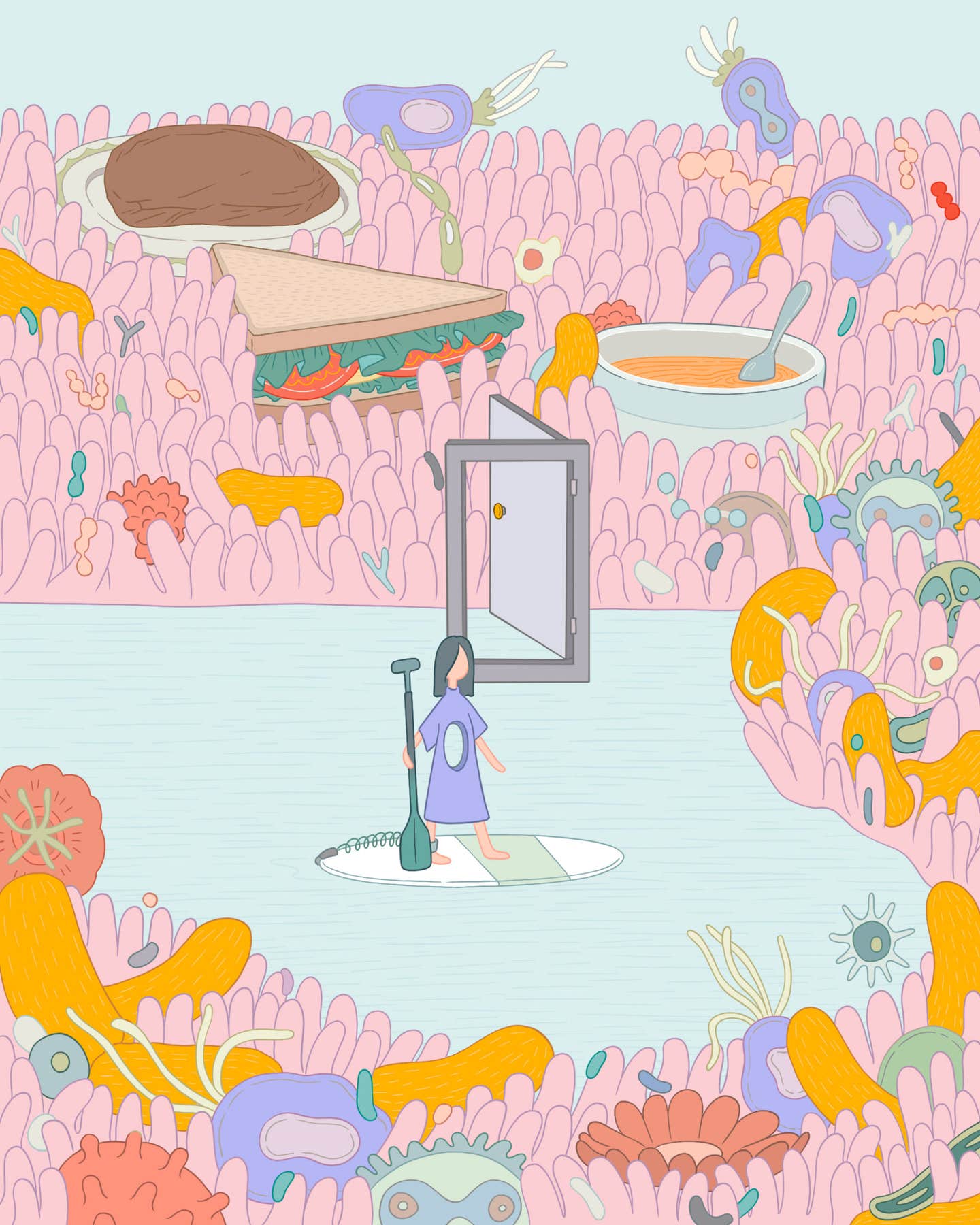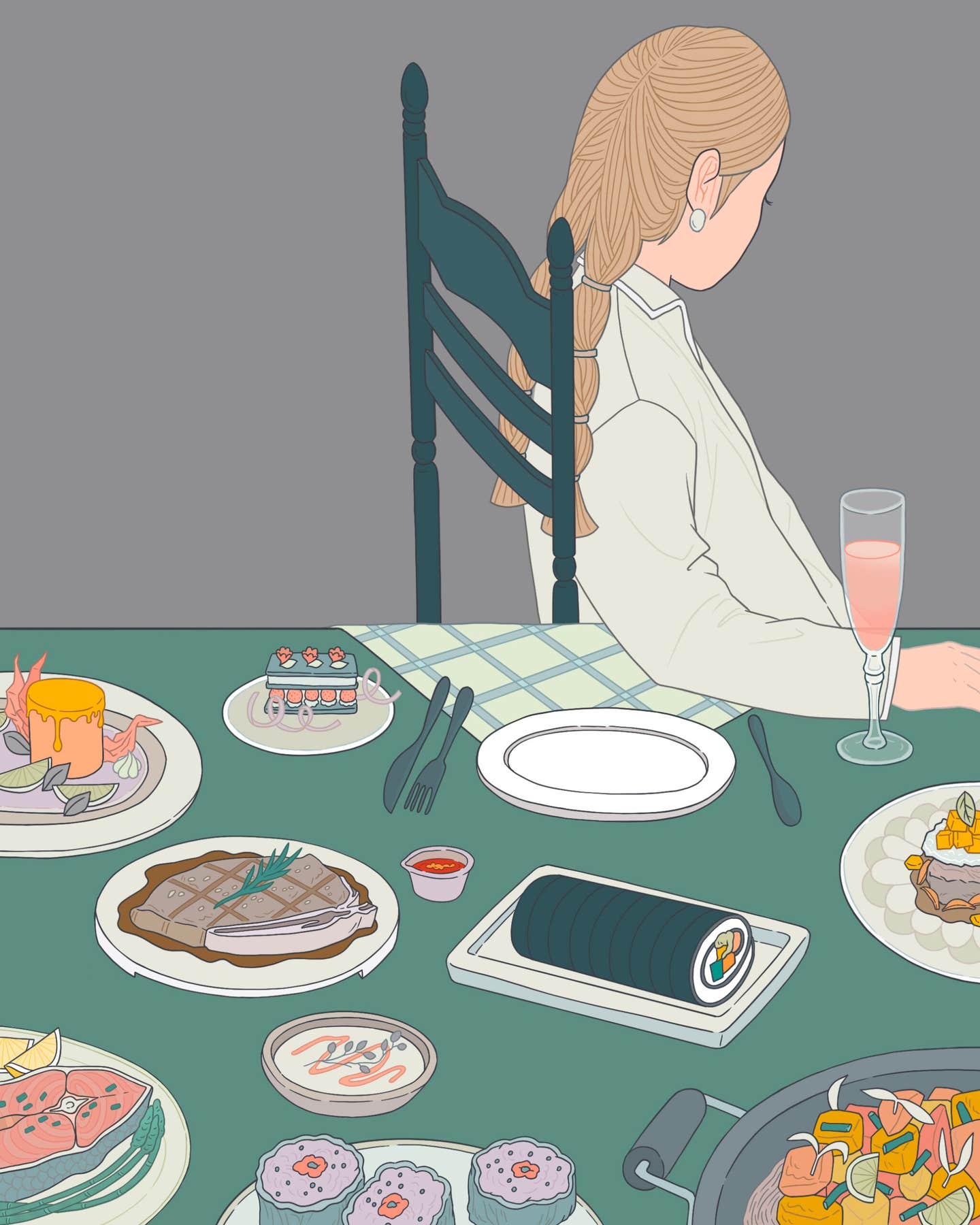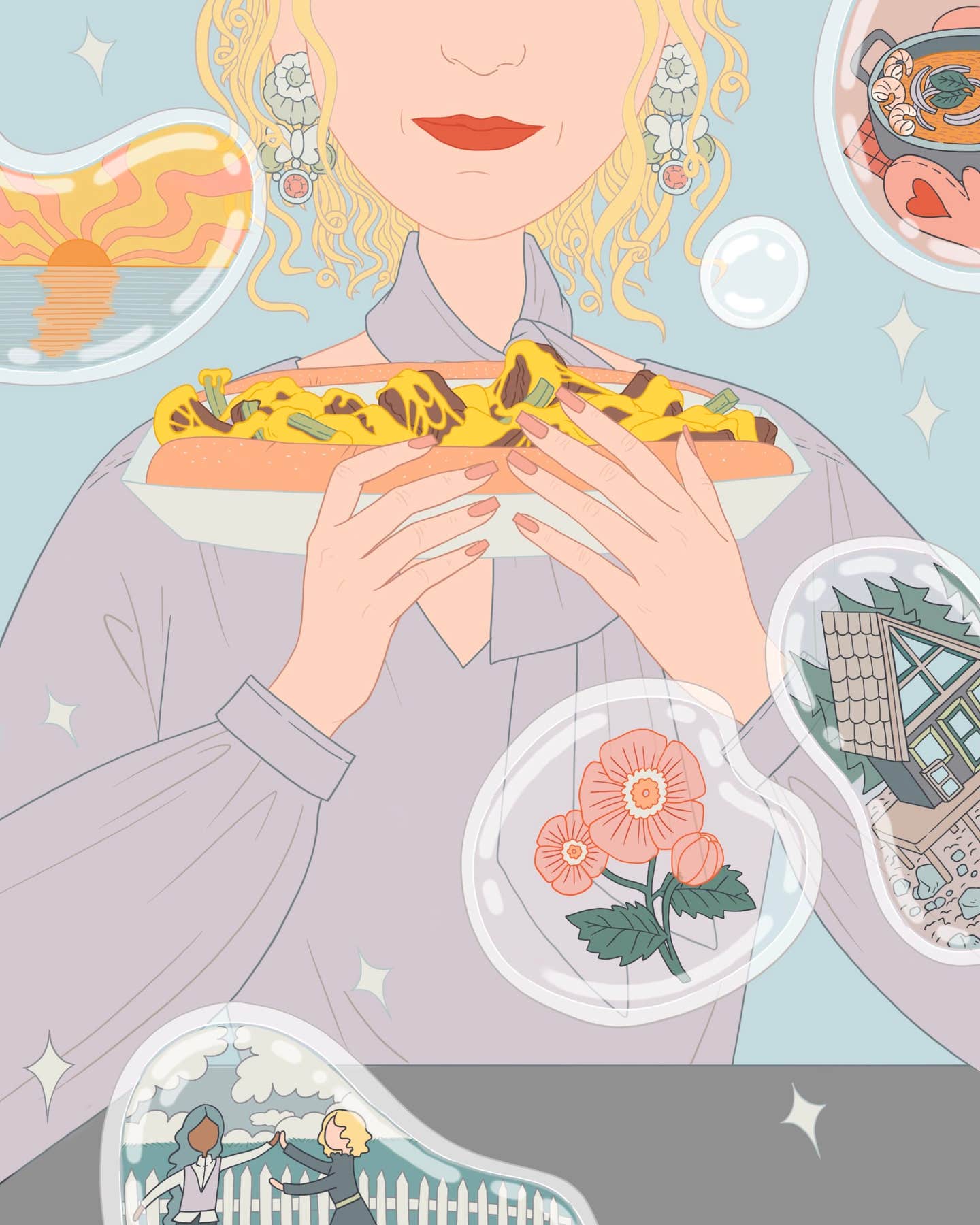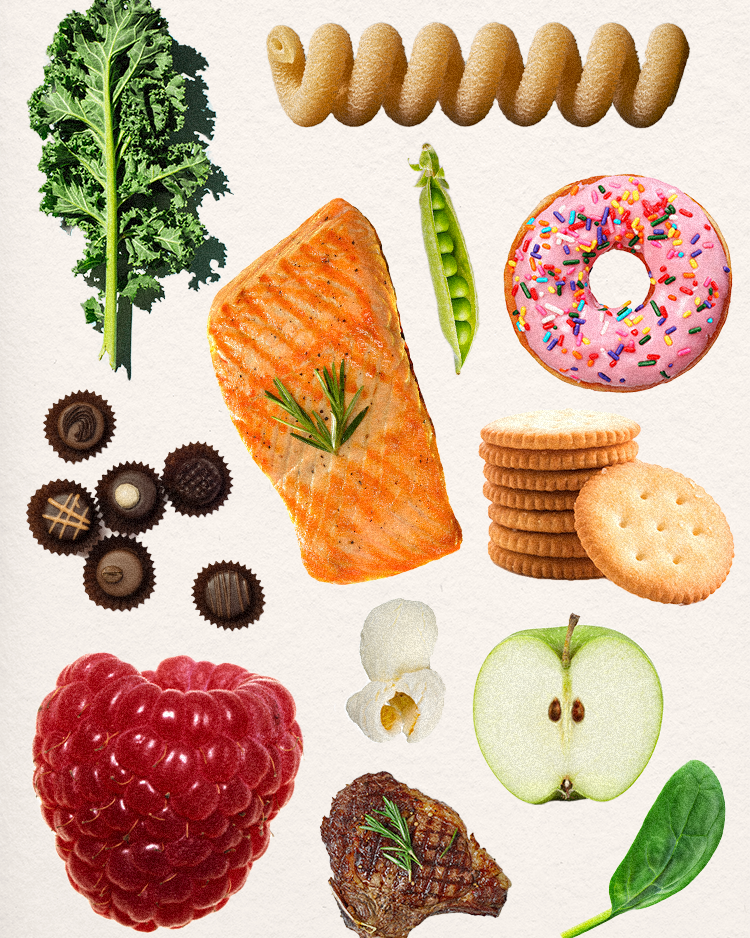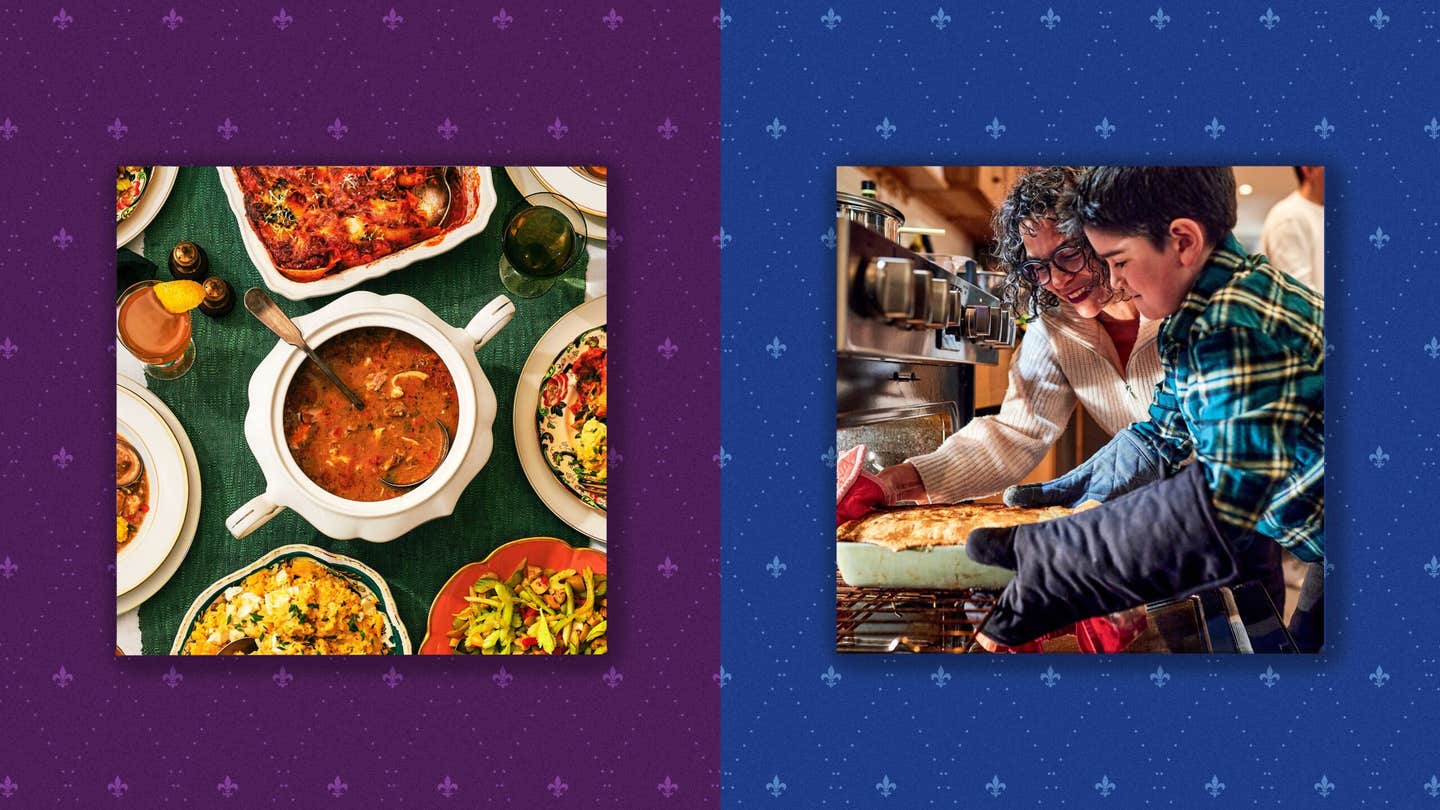Be Kind to Your Gut Now, and the Older You Will Thank You
Experts on the microbiome explain how to eat for health and longevity.

Welcome to Gut Check, our column dedicated to the complex, ever-evolving relationship between food and our bodies. Whether you’re curious about mindful eating or want to understand what makes picky eaters picky, read on and let award-winning journalist Betsy Andrews answer all your burning questions.
For my 60th birthday, I threw a massive party. I set up a sprawling taco and burrito bar with an absurd variety of homemade fillings and fixings. After dark, I was outside grilling sausages and rib-eye steaks. In the wee hours, I served midnight pasta to the stragglers. Food is my love language. I overindulge myself, and I overindulge my crowd.
But there’s another crowd I’ve been thinking about lately: the one in my gut. My microbiome. One hundred trillion strong, this collection of as many as 5,000 microbe species—and I’m still wrapping my mind around this—is not human. It lives symbiotically with us, affecting and being affected by our behavior. I’ve been paying attention to it lately because, as I get older, it’s been nagging at me. “Could you let up a little?” my gastrointestinal system seems to be saying. “Do we have to eat like this again today?”
So, I am listening. Determined to at least tweak my ways, I contacted a few experts to understand the connection between gut health and aging, and to learn how we should all take care of the crowd within, for the sake of our health as our lives progress, no matter our age.
The Biodiversity Inside
“Microbes have inserted themselves into so much of our body,” marvels gastroenterologist Dr. Will Bulsiewicz, aka Dr. B. “That’s obvious when we talk about digestion, where they allow access to nutrients that affect physiology.” The microbes in your gut influence everything: your hormones, metabolism, immune system, cognition, and even mood.
The more diverse those microbes, the better they are at helping you stay healthy. “I liken the microbiome to a rainforest,” says gut expert Dr. Nabeetha Nagalingam, lead scientist at Omed Health and Owlstone Medical. “The more kinds of microbes you have doing important functions, the better, because if you lose one species, others perform their functions.”
That’s one drawback of hitting 60: The diversity in my gut, which rose in my teen years and leveled off in middle age, is now on the decline. As certified nutritionist and registered dietitian Nancy Mazarin, who holds a Master of Science in Nutrition, points out, this decrease in diversity is linked to chronic and neurodegenerative conditions in aging people. Conversely, centenarians, i.e., those folks who are surviving well into old age, appear to have particularly diverse guts.
So if I want to stay hale and hearty, I ought to protect my gut’s biodiversity. According to Kristina Dunkley, a registered dietitian who earned a Master of Science in Foods and Nutrition with a specialty in geriatric nutrition, a gut microbiome that’s “well-fed, flourishing, and changing throughout our lifespan helps with mobility, beneficial blood chemicals, lowering chronic diseases, and overall function.”
I like Nagalingam’s recipe for gut biodiversity: Reduce stress, because your nervous system and gut are interconnected; exercise, because it boosts your mood, releasing endorphins and other good chemicals that communicate with your gut; avoid antibiotics, unless you really need them, because they deplete your microbiome; and most importantly, eat a varied diet.
It’s never too early to prioritize the latter. Diverse fruits, vegetables, whole grains—“The better we eat throughout our life will affect our overall outcome in aging,” says Dunkley. In fact, the longer you wait to change your diet, the less responsive the gut becomes. “We have the ability through our choices to manipulate and shape our microbes,” says Bulsiewicz. But because we metabolize what we eat more slowly as we age, “it will take longer if we’re older. There are small changes that are sustainable that you can do for years to come, and those benefits will continue to grow.”
For Bulsiewicz, who authored the book Fiber Fueled, the chief recommendation for gut health is obvious.
Ramp Up Fiber
You’ve probably met somebody who swears by prunes or Metamucil to stay regular, but it turns out that the fiber in those dried plums not only aids in digestion; it also feeds the bacteria in the colon, which in turn produce crucial nutrients. Those prune-eaters are an enlightened bunch, since fiber increases our odds for longevity. “Ninety-five percent of Americans are deficient in fiber,” says Bulsiewicz. “We used to think fiber just gets pooped out,” he explains. “But some comes into contact with your gut bacteria, which changes it into short-chain fatty acids.” Short-chain fatty acids are dietary superheroes: They protect brain function and maintain muscle mass. They’re anti-inflammatory, cancer-suppressing, and immunoregulatory; they act in preventing obesity, diabetes, and heart disease.
There’s evidence of fiber’s benefits in our DNA. Our chromosomes are protected from aging by protein caps called telomeres, which work like aglets on shoelaces, keeping DNA strands from fraying. Shorter telomeres are associated with age-related diseases—and fiber keeps telomeres from shrinking. One study of the telomeres of nearly 6,000 people ages 20 to 85 found that the quartile consuming the least fiber exhibited up to six more years of cell aging than the quartile that consumed the most.
Bulsiewicz’s conclusion? Eat more plants. “People who eat more varieties of plants improve the health of their microbiome.” These include those long-lived folks in the world’s Blue Zones. Do as they do: Eat your veggies. Have them fresh, frozen, even canned. Turn your pasta sauce into a vehicle for getting veggies into your meal. Nosh on nuts, legumes, and whole grains. They’re the best way to get good carbs.
“Carbohydrates encompass the whole plant kingdom,” says Mazarin. “The fact that we are overeating carbohydrates is a different issue. We are overeating processed carbohydrates: breads, pastas. But there’s no overeating peas, beans, lentils, brown rice, potatoes.”
For eaters like me who are sensitive to beans, Bulsiewicz suggests starting with canned chickpeas or lentils. “They are sitting in water, which helps pull off the stuff that can upset your stomach—a rinse makes them even gentler—then consume them in moderate amounts,” he says. Like a muscle, the gut “can be trained and made stronger,” he adds. “Ten years ago, I wouldn’t have been able to eat a can of chickpeas. Now I can.”
Choose the Right Proteins
“‘Plant-based’ doesn’t mean only plants. It’s flexitarian,” Mazarin says. “Some meat is okay, but not rich steaks every day.” Red meat is high in saturated fats, which are universally accepted as bad for your heart. A diet heavy in red meat also increases your risk of colon cancer.
“Most people over 60 have diverticulosis, or diverticular pouches,” says Dunkley, referring to pouches that form in the walls of the large intestine that can become inflamed; a condition associated with the consumption of red meat. “Fiber helps clean those out, keeping bacterial infection at bay.”
Where does this leave us with protein intake? “As we age, we lose muscle mass,” Dunkley says, which means there’s less cushioning if, say, you take a fall. That’s one reason elderly people are more susceptible to broken hips. Translation: You should increase protein intake as you age.
But as most of us know by now, protein doesn’t have to come from red meat. Leaner animal proteins and those high in omega-3 and -6 fatty acids have additional heart-healthy benefits. That’s why Dunkley tells her patients to eat cold-water, fatty fish such as Arctic char and salmon—in addition to nuts, black beans, and chia seeds.
It turns out, many fiber-rich plants also pack a protein punch. “That’s an argument for lentils,” says Bulsiewicz, which “hit two birds with one stone.” The beauty of legumes is, they’re nutritious and inexpensive.
Avoid Processed Foods
Ultra-processed foods make up 58 percent of the American diet. The rate is even higher among those ages 2 to 19, whose diet is 67 percent processed foods. “This is not the way we ate before. We didn’t snack all day, and our diet was not heavily processed,” says Mazarin.
“You are what you eat,” says Dunkley, “and if you’re having foods that are highly processed and high in sugars and fats, it does increase the risk of inflammation.” Cancer, diabetes, cardiovascular disease, obesity—inflammation can trigger a host of health problems as we age.
Therefore, “in general, we should avoid highly refined foods linked to inflammation of the gut,” says Nagalingam, who notes that aging bodies become less tolerant of ingredients like sugar that are prevalent in processed foods because of the immune response that our gut has when we eat them. She suggests keeping a food diary to monitor and avoid things you eat that inflame your gut. Bloated? What did you eat? Write it down. “Knowing your individual rhythms and how your individual gut reacts to certain foods is important.” You can minimize the bloating and constipation that come with aging if you know which foods worsen those conditions for you.
Less Is Probably More
Processed food is implicated in another change in the American diet that worries Mazarin: snacking. The organisms in our microbiome “only have access to what we feed them. And what’s changed in the last 100 years is that we eat all the time … Manufacturers sold snacking to America,” she says.
As we age, we just can’t eat as much. Our metabolism slows. And many of us don’t move as much. “If we eat more than the energy we can use, we gain weight,” says Mazarin. Weight gain, in turn, can lead to reduced mobility and increased risk of conditions associated with ill health. But she’s a realist: “You can be in good health and have high blood pressure that’s managed well, and you’re doing the best you can with diet and exercise. That’s fine.”
Do Your Best
Sociocultural factors can also shape your microbiome. As I’ve gotten older, for instance, my gut’s tolerance for spicy foods has decreased. But I’m a North American of Eastern European descent. As Mazarin points out, there are cultures in which people eat dishes blazing with chiles their entire lives with no problems. In fact, studies show that capsaicin-rich diets improve the health of the microbiome. Socioeconomics also plays a significant role: Dunkley’s lower-income patients, particularly those who are BIPOC, have “end-of-life outcomes that are much worse” than their white, more-monied counterparts.
Yet each microbiome is distinct. “If you had an identical twin, meaning you share a genetic code, you might grow up in the same home, eating the same food, and yet only share 30 percent of the same microbes,” says Bulsiewicz. So we each need to take responsibility for our guts as we age. That includes checking in with it often. “If you think something’s not right, go with your gut and see a healthcare professional,” says Nagalingam.
But vigilance shouldn’t mean stress or depriving ourselves of the good things in life. For my part, I won’t stop throwing parties, but I am going to cut down on the foods (and portion sizes) that mess with my gut. That way, the crowd within stays happy, too.
Keep Reading
Continue to Next Story
